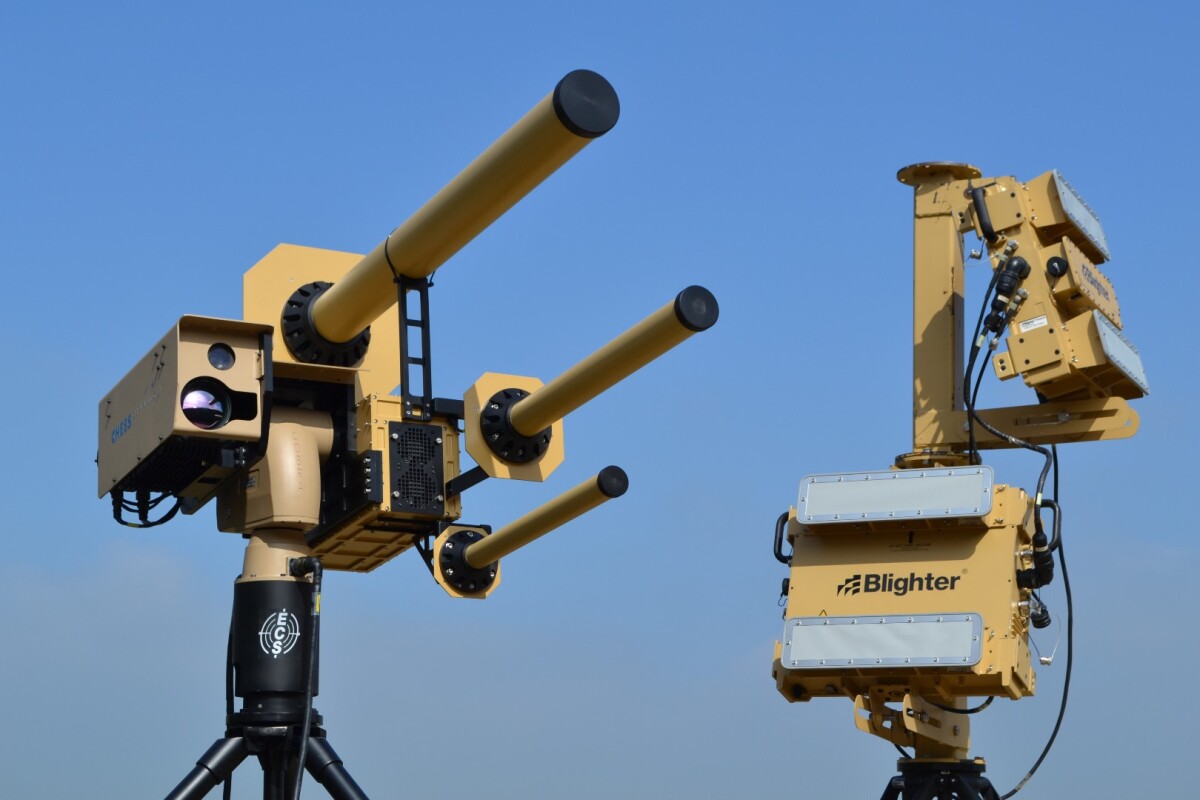Sophisticated, easy to fly drones are everywhere these days and like most new technologies, they have the potential for mischievous or malicious applications as well as positive ones. It follows that there's an increasing demand for improved surveillance and countermeasures specifically tailored for this type of aircraft. Billed as the world's first fully integrated system designed to detect, track and disrupt small and large drones, the Anti-UAV Defence System (AUDS) from Blighter Surveillance Systems uses radio beams to freeze drones in midair by interfering with their control channels.
The AUDS was developed by a partnership of three British companies: Blighter Surveillance Systems, Chess Dynamics, and Enterprise Control Systems. The system is of a modular design for fixed or mobile platforms with each individual unit weighing about 25 kg (55 lb). These units consist of a A400 Series Ku band electronic scanning air security radar, a stabilized x30 electro-optic director with infrared, thermal, and daylight cameras, and a directional radio frequency (RF) inhibitor. The AUDS uses the radar and optical trackers connected to proprietary software to detect, track, and identify the drone at distances of up to 8 km (5 mi).
Once the suspect drone is locked onto, a radio inhibitor/jammer fires a 4-watt directional beam at the craft, which is much more powerful at reception than the signal from the drone's controller. According to Blighter, the AUDS can briefly inhibit the drone to make the operator think it's malfunctioning or lock it until the drone's batteries drain and it crashes. The latest version of the system uses a quad-band radio frequency (RF) inhibitor/jammer that can disrupt all commercial drone licensed telemetry bands, and is effective against micro UAVs at up to 2 km (1.2 mi) and mini UAVs at longer ranges.
In addition to the radio disruptor, AUDS also has an optical disruptor that can disrupt the auto focus on the drone's camera, rendering it useless.

"Countering drones is now a global issue and an increasing concern for the military, government, and homeland security forces across every continent," says Graham Beall, managing director, Chess Dynamics. "It's expected that unmanned aircraft systems will be used increasingly for malicious purposes as they can carry cameras, weapons, toxic chemicals and explosives and are being used increasingly for terrorism, espionage, and smuggling purposes."
"Our system has been developed to address this urgent operational requirement and has been successful in government sponsored counter-UAV trials, detecting, and disrupting a variety of fixed and rotary wing drones in under 15 seconds. The new capabilities further enhances the system's suitability for countering rogue or malicious unmanned aircraft systems."
The AUDS made its public debut in May and has undergone testing in Europe and North America in different terrains ranging from open country to urban settings. A production version was showcased at the DSEI Show in London last month and is available from Blighter or Lighteye Systems in the US for £800,000 (US$1.2 million).
The video below introduces the AUDS.
Source: Blighter









